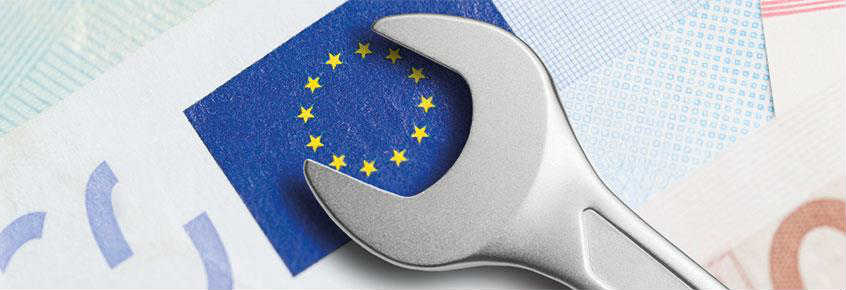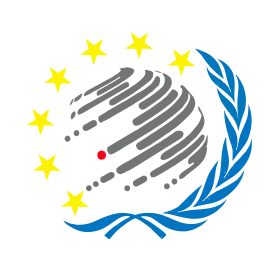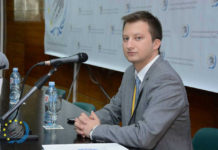EU that we know today is overcome and time-worn. Today’s EU has started as the European Coal and Steel Community, grew up to European Economic Community making in parallel free trade area and monetary union, followed by European Community and finally European Union in 1993. EU has continued to develop and expand both in a territorial and economic sense until today. Therefore, we can see that the history of the EU is the history of changes, progress, expansion and innovation.
However, the history of the EU is also the history of the crisis. Throughout history, EU had been dealing with different types of crisis: economic, political, the crisis of legitimacy etc. Interesting and important thing is that EU has always got out of these crises even stronger. Maybe today’s Union as a sui generis organization is not sustainable anymore, maybe the time has come for the change.
With the time passing EU has been changing its institutions and procedures by treaties. Last treaty, which is in power today, was signed in Lisbon in 2007 and came into force in 2009. Under this treaty main institutions of the EU are European Council – a body composed of the heads of governments and states of the member states, the second body is Council of the European Union often referred as a Council of Ministers in which ministers of member states take part in decision-making. The third body is the European Commission with 28 commissioners – every member state has one. There is also European Parliament with its 751 directly elected members. Finally, there are two more important institutions within the European Union which are: European Court of Justice located in Luxembourg and European Central Bank situated in Frankfurt.
European Council is the body that is in charge over overall political direction and priorities. Its members are non-elected, which can be a severe problem in the context of legitimacy and democratic deficit. Council of Ministers is composed of ministers of different departments of member states governments and shares legislative power with the Parliament. European Parliament is a legislative body which adopts new laws on the proposal of EC and Council of Ministers which are binding for all member states. Finally, European Commission possesses executive powers like proposing legislation, implementing decisions, upholding the EU treaties and managing the day-to-day business of the EU. In the end, ECB is in charge of monetary policy of the monetary union and ECJ is in charge of enabling implantation of EU law as a supreme court.
Nowadays, everyone is aware of multiple crises that hit EU in recent years. Economic crises that started in 2008 have shaken the monetary union. On the other hand, BREXIT started a political crisis. Moreover, there are constant critics on democratic deficit within the EU and its institutions, especially during the European migrant crisis. It’s become clear that reform is needed for the European Union. But where to start? And what kind of reform?

First, the only directly elected body with full democratic legitimacy in the EU is European Parliament. But the question is, is it enough? Especially if we take into consideration that turnout for the EP general election is for a couple of electoral cycles less than 50%, which is devastating speaking in terms of democratic legitimacy. In order to reduce, or maybe totally diminish democratic deficit and increase the legitimacy of EU institutions some changes should be made regarding other institutions. Therefore, I offer a proposal for comprehensive reform of the Union’s institutions in order to enable long-term existence and which would prevent crisis and instability.
So, the first major change that I would propose is the elimination of the European Council and the transfer of its powers to the European Commission. European Council is the body with lack of legitimacy but on the other hand body with the biggest influence on the EU as a whole. This body has often been criticized because of its crucial role in running the whole EU and all of its members are indirectly elected. In order to strengthen the legitimacy of the European Commission, some changes are needed. President of the European Commission should be elected directly by popular vote. Therefore, the president of the EC would the president of the European Union, and EC would be real European Government with full executive powers. President than would choose 18 commissioners where at least 5 should come from 5 new member states. Present Commission with its 28 Commissioners is too big for an effective and efficient government. However, with the rule that 5 ministers would come from the new member states representation by rotation of the smaller states would be secured. European Parliament would have to approve candidates for commissioners, which is an element of parliamentary systems, but this would limit the power of the president and raise the influence of the European Parliament.
Decisions in EC would be adopted by simple majority voting and in some cases by qualified majority regarding important questions. Under these changes the political system of the EU would become presidential based on the American presidential system, but with elements of the parliamentary system characteristic for European states. However, a direct election for the European president would increase turnout among the citizens of the EU which would result in decreased democratic deficit and increased legitimacy. European Parliament would also have the right of legislative initiative which would be one important change more. The point is in making EU office positions more attracting for politicians than national, which certainly would be with increased powers. Then imagine for instance Emanuel Macron and Angela Merkel competing for the position of EU president? This would make European elections more interesting to the voters and would increase turnout, which currently is the grave problem.
Another change would be regarding the Council of Ministers. This body shouldn’t be eliminated by my proposal like European Council, however, its powers should be reduced at the level of advisory decisions. On the other hand, the Council of Ministers should be given a possibility to be able to request qualified majority voting in the European Commission regarding some important questions.
Finally, when the presidential system established, one more major change should be introduced. By proposed reforms so far, many problems would be solved, like a democratic deficit, lack of legitimacy and political crises. But how to deal with future economic crises? A crisis that started in 2008 threatened to destroy monetary union completely. However, a common monetary policy isn’t a problem; problem actually is different national fiscal policies. This is the area where reform should come. When established, with democratic legitimacy, president of the EU with European Commission should be given power over fiscal policy of the Union. This would mean a further transfer of sovereignty from member states to the government in Brussels and one unique fiscal policy in Europe. By these reforms, future economic crises would be prevented.
There are lots of voices in Brussels and across Europe speaking of institutional reforms and its necessity. EU has its cycles of reform and I think the moment has come. It’s time for a huge reform within the EU and by strengthening EU institutions and transferring more sovereignty from national states EU is going to overcome the crisis and come out from it stronger.
Implementing all these proposals would constitute the European Union as a federal state by a model of the USA. United States of Europe would be established, which I believe would increase inner unity of the EU and strengthen EU’s institutional capacity. And now is the chance and time for Europe to come out from current problems even stronger. This kind of united Europe would establish it as a more credible player in international relations with more unity for the internal affairs as well as for foreign policy. Moreover, there are more and more voices supporting the United States of Europe concept within the EU officials. Therefore in 2014 Prime-Minister of Italy Mateo Renzi said that: “Italy [will] push for ‘United States of Europe’ when it holds the EU presidency” and also more recently Martin Schulz – president of the European Parliament was talking about ‘United States of Europe’ by 2025. Of course, still, there is no consensus on how institutional set-up would be like. In that sense, I find worth of this article and its purpose – to give people idea how Europe could look like in the upcoming years. That is also important for the citizens of Serbia because many expect that accession of Serbia to the EU will come about 2025. Although I personally am not such an optimist about the year, still it is important for people in Serbia to know what they can expect from the EU in the coming years.
To sum up, Europe in 10-15 years will for sure be different than today, the question is in which way reforms will go. United States of Europe is one possible outcome which looks most likely, however, even within this model, there are many different variations of potential institutional setup. Time will show us if the United States of Europe were a realistic project or just unfinished dream of Europeans.
Author: Miloš Pavković – student at the University of Graz, Joint Interdisciplinary Master’s Programme in South-Eastern European Studies.









